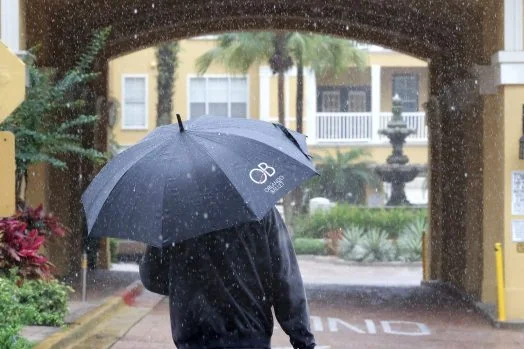
Can Rainy Days in Florida Turn the Tide on Drought and Wildfires?
In recent days, Florida has been soaked by unexpected rains, offering a glimmer of hope in the face of persistent drought and wildfire threats. This weather shift is crucial for the Sunshine State, where dry conditions had sparked widespread concerns about environmental safety and community well-being.
Central Florida, in particular, has seen a dramatic turnaround. According to the National Weather Service, areas around Orlando received over 4.3 inches of rain in early May, far surpassing the typical one-inch average for the period. This deluge, driven by a weak cold front sweeping through the southeastern United States, has not only replenished parched soils but also quelled fears of escalating wildfires. Meteorologist Tim Sedlock noted that the rains have helped lower the Keetch-Byram Drought Index in counties like Orange and Seminole, potentially lifting burn bans that were enacted as early as late March.
Comparatively, South Florida experienced even heavier downpours, with some regions expecting up to 10 inches of rain in a 24-hour span. While this has led to flood watches in places like Miami and Fort Lauderdale, it's a welcome change from the extreme drought conditions reported last week. The Florida Forest Service reported a significant drop in active wildfires, from 85 on May 1 to just 40 by Monday, including contained blazes in Osceola County. Doreen Overstreet, a spokeswoman for the Seminole County Fire Department, called the rainfall 'good news for fire departments,' highlighting how it has reduced the need for emergency deployments in rural areas.
Rainfall totals paint a vivid picture of the relief. In Polk County, Lake Wales recorded 6.54 inches, while Kissimmee in Osceola County saw 4.53 inches. Other spots like Winter Park and Oviedo measured between 4.5 and 4.97 inches, respectively. This surge in precipitation has not only greened up lawns and filled small ponds but also mitigated the risks associated with the driest April since 2017. Experts warn, however, that this respite might be short-lived. The storm system is expected to clear out by early Tuesday, ushering in drier, hotter conditions with temperatures soaring into the mid-90s by week's end.
Analyzing the broader implications, this weather pattern underscores the volatility of climate impacts in Florida. While the rains have provided immediate benefits, they also highlight the need for sustainable water management and preparedness for extreme weather events. As meteorologists like Cam Tran from First Warning predict more scattered showers in the coming days, residents are left wondering if this is a temporary fix or a sign of shifting patterns in the region's official rainy season, which begins on May 27.
In summary, Florida's recent rains have been a double-edged sword—relieving drought woes while posing flood risks—but they emphasize the importance of environmental resilience. What do you think: Is this just a lucky break or a call for long-term climate action? We invite you to share your thoughts in the comments below and spread the word by sharing this article.